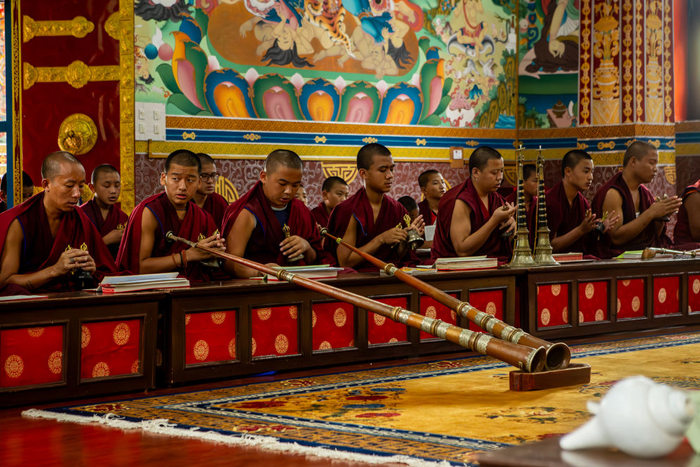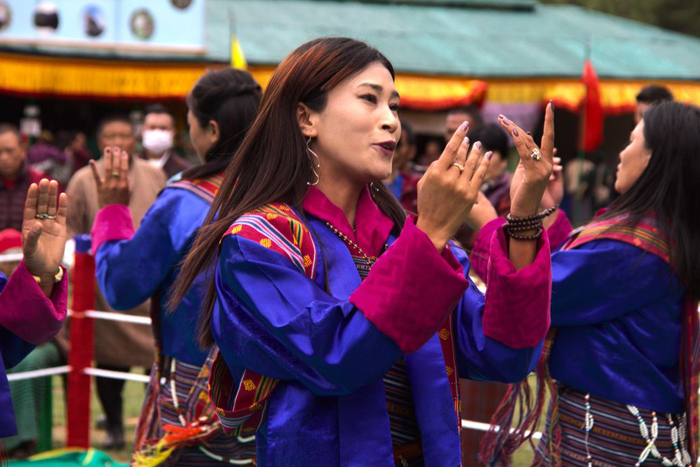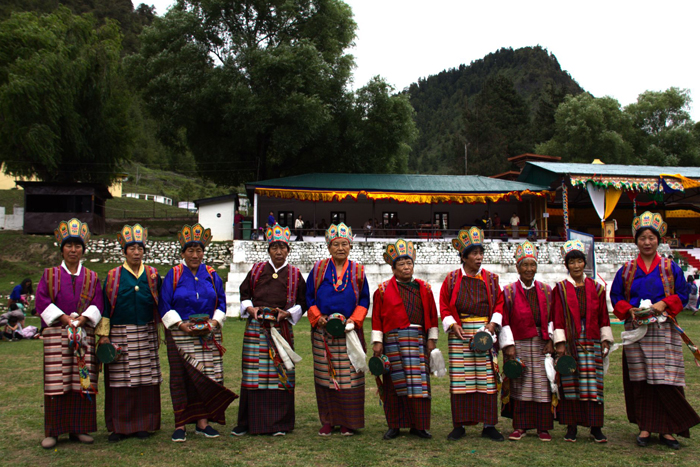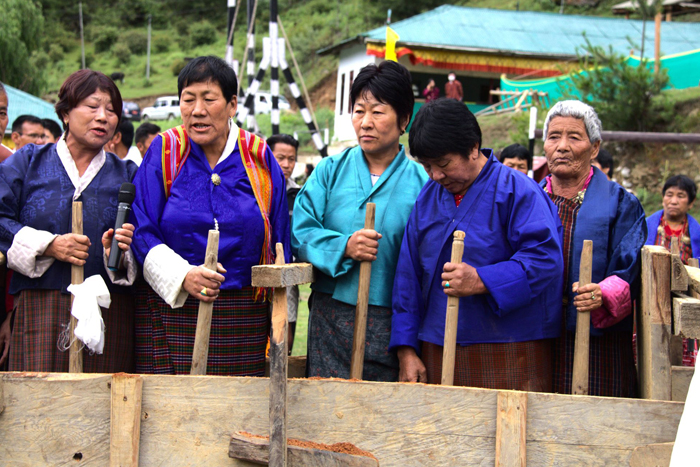Traditional art and music
Bhutan’s history and culture are intertwined with its art and music. Passed down and transformed from generation to generation, these creative works form a spell-binding mosaic of the nation's spirituality, tradition and nationalism.
Bhutanese music can be classified as folk, literary, lozey, religious, rigsar and B-pop. With an explosion of radio stations, Youtube videos and live performances, it’s safe to say that the Bhutanese music scene is only getting more popular both within the country and internationally.
Bhutanese art is influenced by Tibetan religious paintings and often depicts saints of Vajrayana Buddhism. This type of art adorns the walls of almost every dzong, chorten and monastery that you will visit. Modern art is also gaining popularity and can be appreciated with a visit to contemporary art galleries. There are also 13 famous arts and crafts of Bhutan known collectively as “Zorig Chosum.”
Experiencing Bhutanese art and music during your trip means opening your eyes and ears to the multitudes of perspectives, values and understandings that exist in this small country.
Before the introduction of musical instruments, music in Bhutan were oral tales of love and spirituality. This type of folk music differs from region to region and is still performed at tsechus. This type of music is often accompanied by dancers. Tshechus are also where you can hear the religious music and chants performed by the monastic body.
There are also many types of traditional instruments that are found in Bhutan. These include the dranyen or seven stringed lute, chiwang fiddle, dong lim bamboo flute and chikang mouth organ. Monks often use cymbals and flutes in their religious chants and during mask dance performances.
A greater understanding of Bhutanese music and dance can be found when visiting the Royal Academy of Performing Arts (RAPA). This is a government organization that promotes the preservation of traditional Bhutanese culture. The Academy instructs musicians and dancers in both secular and religious folk music and dance. The Academy showcases live performances of songs and dances from Bhutan's various regions and genres.
Currently the music that you will hear on radio stations or played in restaurants and cafes is B-pop or Bhutanese pop music. This genre is influenced by western music, K-pop and is often accompanied by rap sequences and high quality music videos. The young and innovative B-pop artists have found immense success both in Bhutan and in neighboring regions of India.
Bhutanese art originated to depict scenes and saints represented in Tibetan Buddhism. Deities like Padmasambhava, Guru Rinpoche and Terton Pema Lingpa are often depicted in murals and paintings found at religious sites. Besides painting, Bhutan’s 13 arts and crafts include sculpture, carving and needle work among others. A visit to the Zorig Chosum Institute is recommended for art lovers.
There is only so much that you can read about Bhutan’s rich culture of art and music. It must be experienced by visiting galleries, museums, monuments and attending live performances. The traditional art and music of the country is carefully preserved but it is also continually evolving to suit the needs and tastes of the modern Bhutanese.






